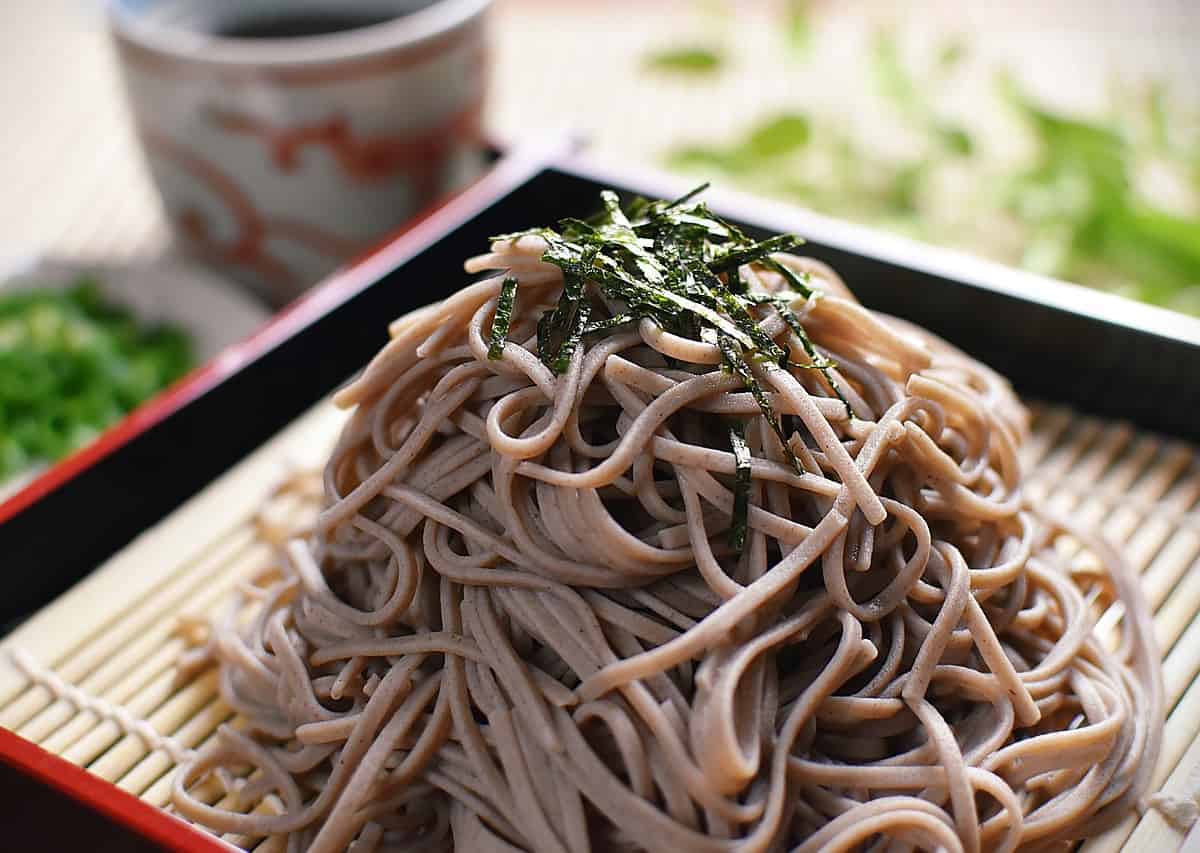Konnichiwa! When it comes to Japanese cuisine, the culinary world is captivated by the rich flavors and diverse ingredients found in dishes like sushi, ramen, and tempura. However, one aspect that often goes unnoticed is the incredible variety of noodles. In this blog post, we will dive into the fascinating world of soba and udon, two popular types of Japanese noodles. Join me as we explore the differences in ingredients, cooking processes, ways to eat them, and the delightful accompaniments that enhance the flavors of each.
Soba vs Udon – What’s the Difference?
The fundamental difference between soba and udon lies in the main ingredient used to make the noodles. Soba noodles are primarily made from buckwheat flour, while udon noodles are made from wheat flour.
Buckwheat flour gives soba noodles their distinct nutty flavor and darker color. It also contributes to their slightly chewy texture. On the other hand, udon noodles, made from wheat flour, have a milder, neutral flavor and a thick, chewy texture.
The difference in ingredients results in variations in taste, texture, and cooking methods. Soba noodles have a more complex flavor profile, while udon noodles have a simpler, more neutral taste. Soba noodles tend to be thinner and have a slightly rougher surface, allowing them to absorb flavors from dipping sauces or broths. Udon noodles, being thicker and chewier, provide a heartier bite and can withstand longer cooking times without losing their texture.
It’s worth noting that both soba and udon are versatile and can be enjoyed in various dishes, both hot and cold, with a variety of toppings and accompaniments. The choice between soba and udon often comes down to personal preference and the desired flavor and texture experience.
Soba: A Nutrient-Rich Delicacy
As a fan of Japanese cuisine, I have always been intrigued by the unique taste and nutritional value of soba noodles. Soba is made from buckwheat flour, which gives it a distinctive nutty flavor and a delicate, slightly chewy texture. Here are some key points to know about soba:
Ingredients:
- Buckwheat Flour: The main ingredient that imparts the earthy taste and dark color to soba.
- Wheat Flour: Often used in combination with buckwheat flour to enhance the texture and elasticity of the noodles.
- Water: A crucial element to bind the flours together and form the dough.
Process:
- Mixing and Kneading: Buckwheat and wheat flours are combined and kneaded with water to form a firm dough.
- Rolling and Cutting: The dough is rolled out and then cut into thin, long noodles.
- Boiling: Soba noodles are cooked in boiling water until tender, usually for about 4-5 minutes.
- Cold Water Rinse: After cooking, the noodles are rinsed with cold water to remove excess starch and achieve the desired texture.
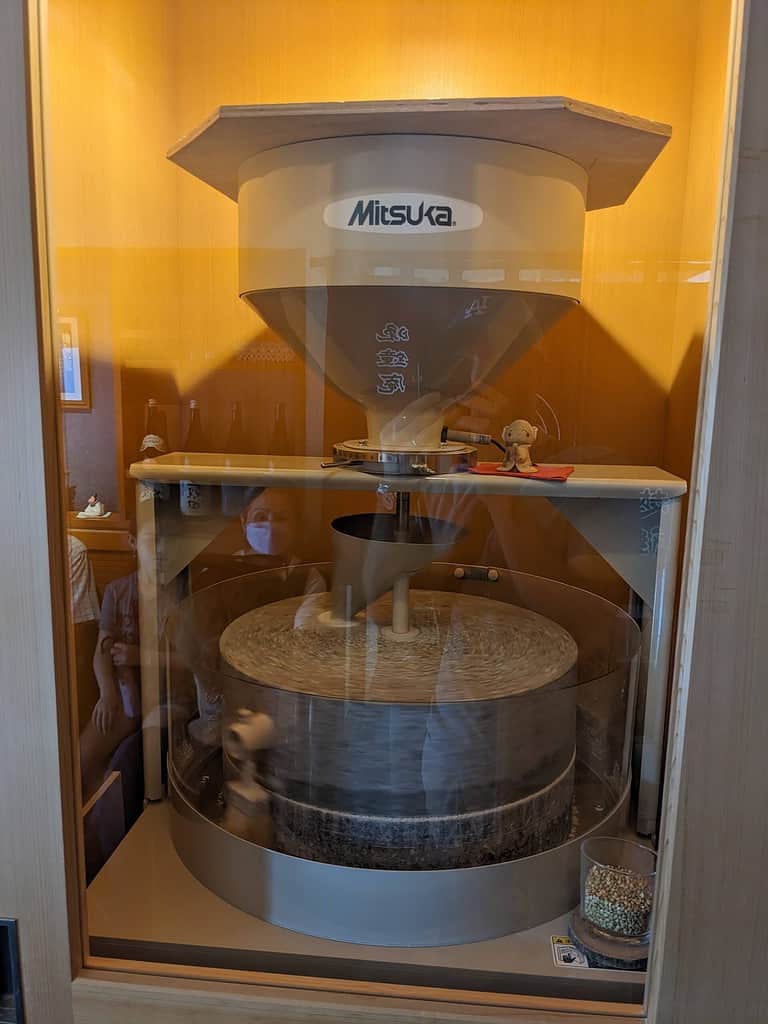
Ways to Eat Soba:
- Zaru Soba: Served cold on a bamboo tray (zaru) with a dipping sauce called tsuyu, garnished with thinly sliced green onions and wasabi.
- Tempura Soba: Served hot in a savory broth topped with crispy tempura.
- Kake Soba: Served in a hot broth flavored with soy sauce, garnished with green onions, and sometimes topped with tempura or other ingredients.
Accompaniments:
- Tsuyu: A dipping sauce made from a blend of soy sauce, dashi (a Japanese stock), mirin (sweet rice wine), and sometimes grated radish or ginger.
- Nori: Sheets of dried seaweed often added as a garnish or used to wrap the soba noodles.
- Tempura: Deep-fried vegetables or seafood that adds a delightful crunch and flavor contrast to soba dishes.
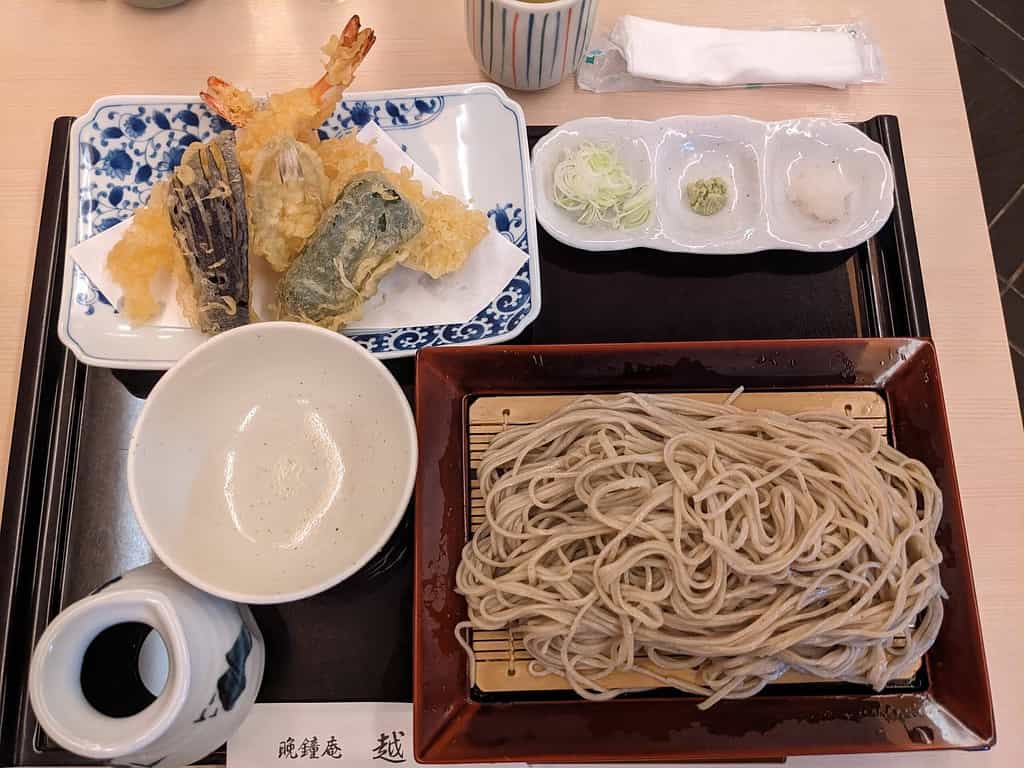
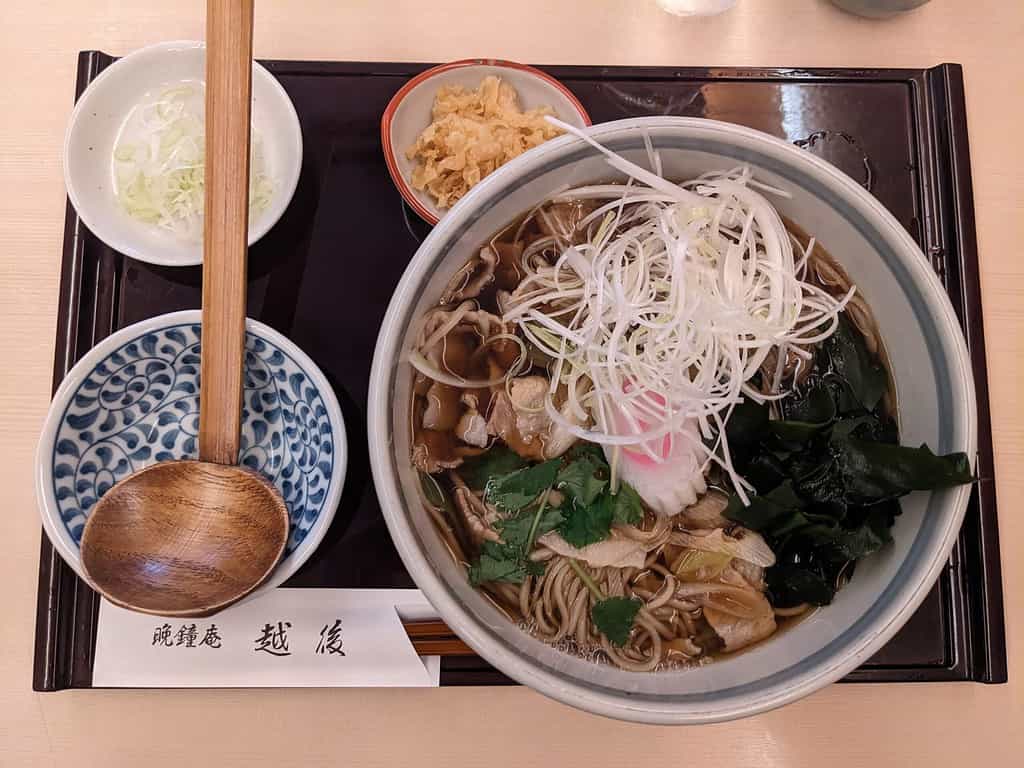
Udon: A Hearty and Versatile Delight
While soba noodles possess a unique charm, the thick and chewy texture of udon noodles provides a completely different culinary experience. Here’s what makes udon stand out:
Ingredients:
- Wheat Flour: The main component of udon noodles, giving them their soft and chewy texture.
- Water: Essential for forming the dough and cooking the noodles.
Process:
- Mixing and Kneading: Wheat flour and water are combined and kneaded until a smooth dough is formed.
- Resting: The dough is allowed to rest for a period to relax the gluten and enhance the texture.
- Rolling and Cutting: The dough is rolled out and cut into thick, cylindrical noodles.
- Boiling: Udon noodles are boiled in water until they reach the desired softness, usually for about 8-10 minutes.
Ways to Eat Udon:
- Kake Udon: Served in a hot broth made from soy sauce, dashi, and mirin, garnished with green onions and served as a simple and comforting meal.
- Kitsune Udon: Udon noodles topped with sweetened deep-fried tofu (aburaage) in a flavorful broth.
- Tempura Udon: Udon noodles served in a hot broth with crispy tempura on top, creating a delightful contrast of textures.
Accompaniments:
- Tsuyu: The same dipping sauce used for soba can also be used with udon, either as a dipping sauce or poured over the noodles in the broth.
- Kamaboko: Steamed fish cake slices often used as a garnish in udon dishes, adding a subtle flavor and a splash of color.
- Green Onions: Thinly sliced green onions provide a fresh and aromatic touch to udon bowls.
- Soft-Boiled Egg: Adding a perfectly cooked soft-boiled egg to your udon bowl creates a creamy and satisfying addition.
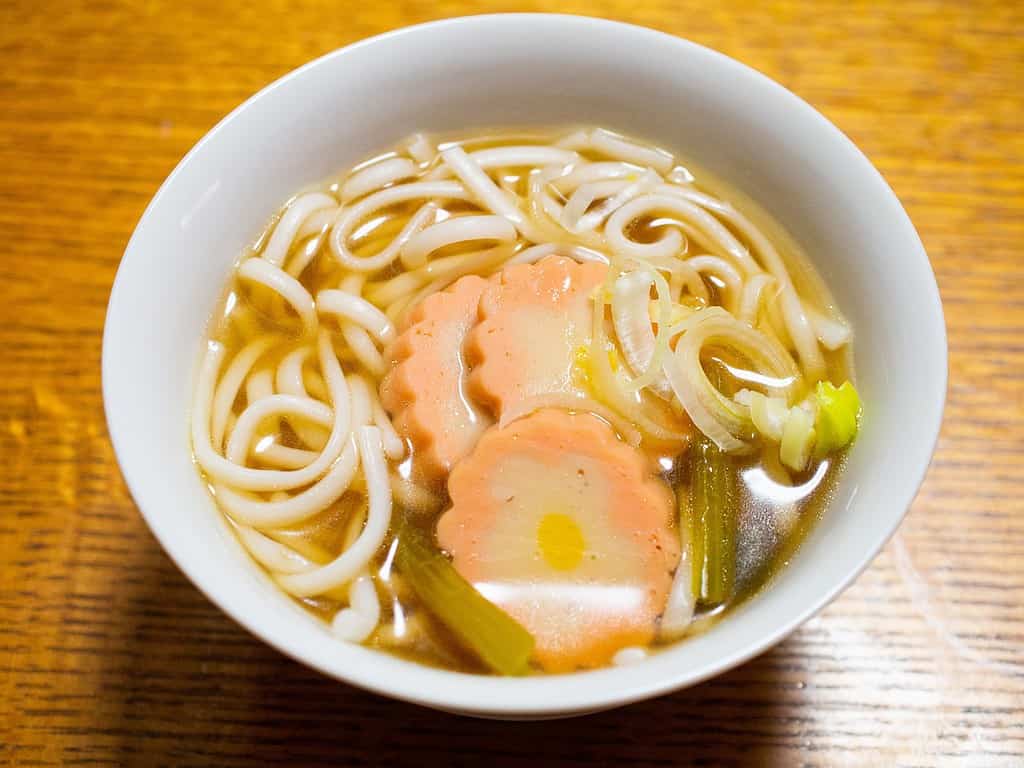
Soba vs Udon: Flavor Profiles and Texture
Soba and udon noodles have distinct flavor profiles and textures, making them suitable for different preferences and occasions:
Soba:
- Flavor: Soba noodles have a nutty, earthy flavor derived from buckwheat flour, creating a unique taste that is often described as more complex.
- Texture: Soba noodles have a delicate chewiness and a slightly rough surface, allowing them to absorb the flavors of the accompanying dipping sauce or broth.
Udon:
- Flavor: Udon noodles have a mild, neutral flavor, allowing them to pair well with various broths and toppings.
- Texture: Udon noodles are thick, soft, and chewy, providing a more substantial and hearty bite.
Regional Variations and Cultural Significance
Both soba and udon hold significant cultural and regional importance in Japan:
Soba:
- Shinshu Soba: Hailing from the Nagano region, Shinshu soba is known for its high-quality buckwheat flour and tradition of hand-rolling and cutting the noodles.
- Toshikoshi Soba: Eaten on New Year’s Eve, this tradition involves eating soba noodles to symbolize longevity and to let go of the hardships of the previous year.
Udon:
- Sanuki Udon: Originating from the Kagawa Prefecture, Sanuki udon is renowned for its firm texture and square shape, often enjoyed with a soy-based broth.
- Inaniwa Udon: Hailing from Akita Prefecture, Inaniwa udon is hand-stretched and air-dried, resulting in thinner and smoother noodles.
Summary
In the battle of soba vs. udon, it’s evident that both noodles offer distinct flavors, textures, and cultural significance. Soba impresses with its nutty taste and delicate chewiness, while udon stands out with its thick, chewy texture and versatility. Whether you prefer the refined elegance of soba or the hearty comfort of udon, exploring the diverse world of Japanese noodles is a culinary adventure that shouldn’t be missed. So, next time you find yourself in a Japanese restaurant, embark on a delightful journey and savor the unique delights of soba and udon. Remember, soba vs. udon is not a competition but an appreciation of the rich tapestry of Japanese cuisine.

